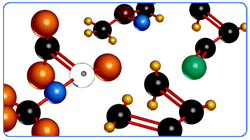
|
7108
S. Alton Way, Unit I |
(303) 758-2728
Home > Elastomers > History
History of Polymers
As far back as 1839, Charles Goodyear first improved the elastic properties of natural rubber by heating with sulfur (vulcanization). It was not until the 1930s that the macromolecule model of rubber was understood. After World War II and through the 1950s rapid developments in synthetic polymers were made. Most commercial high-performance elastomers trace their origins to the 1960s and 1970s.
Polymers are long chains of repeating chemical units, or monomers. The chemical skeletal structures may be linear, cyclic or branched. When one monomer is polymerized, the resultant polymer is called a homopolymer. Examples include polyethylene, polystyrene and polytetrafluoroethylene (PTFE). Copolymers (or dipolymers) are derived from the polymerization of more than one type of monomer. The distribution of monomers in these copolymers can be statistical, random or alternating. Examples include ethylene-propylene and fluorocarbon elastomers (vinylidene fluoride and hexafluoropropylene). Terpolymers are three-monomer-unit polymers, such as ethylene-propylene-diene (EPDM) and specialty fluorocarbon grades.

Next Topic Elastomer Processing Part 1
We are located in the Denver Technological
Center in a suburb of Denver, Colorado
©1997-2017, Problem Solving Products, Inc.
Website Map | Privacy Statement
| Terms of Use

